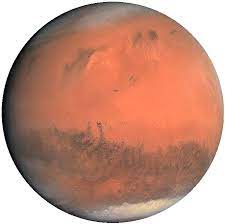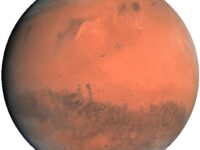The United States has landed nine payloads on Mars — the fourth planet from the sun, with a reddish-brown coloration — dating all the way back to 1976. And yet, no human has ever set foot on Mars.
Although Earth’s and Mars’ days are approximately equivalent lengths, many stark differences exist between the two celestial bodies. Mars’ diameter is roughly half of Earth’s. A year on Mars is nearly double the length of that on Earth. However, more consequential differences pose barriers to travel. Gravity on Mars is 37.5% as strong as that on Earth, a phenomenon that increases the risk of bone lesions and osteoporosis, with a primary symptom of weak and brittle bones. Additionally, astronauts on Mars would need supplemental oxygen because Mars has far too little oxygen for humans to breathe. Temperature is also another major problem. Mars’ average temperature is negative 81 degrees Fahrenheit: 138 degrees below Earth’s and non-survivable.
However, NASA’s space suit, the Pressure Garment Assembly (PGA), combats two of these issues. The PGA provides breathable oxygen, allowing humans to rebreathe it in a purification process that takes out CO₂ and other unwanted gasses. Also, the suit aids human survival in temperatures down to negative 250 degrees.
Radiation, which is quite powerful in space, poses a serious risk to astronauts. Dissimilar to Earth, Mars lacks a magnetic field that can provide protection from radiation. While NASA’s space suits already combat the harmful impact of radiation, NASA is designing vests for further safety. Whether or not the vests would provide adequate protection against the severity of radiation or other health hazards for the long and treacherous trip to Mars is still unknown.
Despite the numerous complications, there are signs that an attempt at such a journey is not too far away.
It would take approximately eight months to travel to Mars. To save the most fuel possible, the spacecraft must take off when Earth and Mars are in the ideal positions in their orbits, which occurs merely once about every 2.2 years.
Despite the numerous complications, there are signs that an attempt at such a journey is not too far away. Elon Musk, Chief Executive Officer and Chief Engineer at the spaceship engineering corporation SpaceX, implied earlier this year that a crewed mission to Mars could launch in 2029. NASA intends to send astronauts to Mars during the 2020s or 2030s. It may seem to stretch the limits of science, but humans reaching Mars would be an enthralling achievement.
Sources:
https://www.npr.org/2022/03/17/1087167893/elon-musk-mars-2029
https://history.nasa.gov/SP-368/s6ch6.htm






